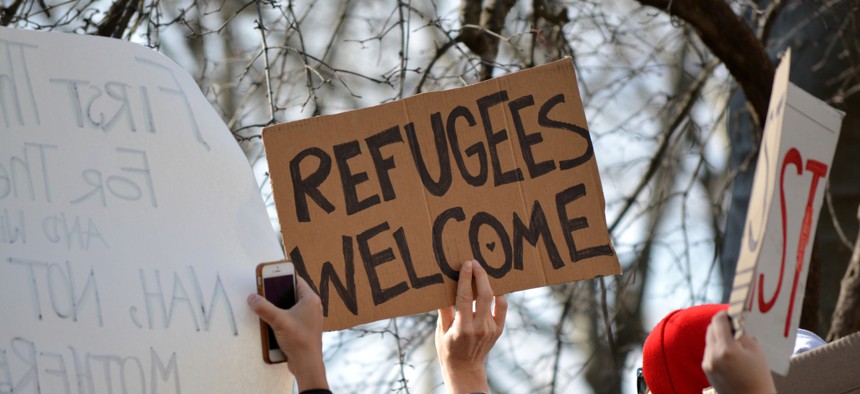Refugee Arrivals Up as Trump Administration Considers Cutbacks
African refugee arrivals are up 44% but cutbacks may be imminent.
New statistics show refugee arrivals up modestly from historic lows last year, though the Trump administration is considering stopping the flow completely.
As of Sept. 4, 28,282 refugees had arrived in fiscal 2019, according to the U.S. Committee for Refugees and Immigrants (USCRI), with a month left in the fiscal year. That’s up 26% from 22,491 in fiscal 2018, which marked the lowest number since 1977.
Immigration is holding population loss at bay in a fifth of U.S. counties, partly because of refugee workers, and some small towns are seeking out refugees to bolster declining labor forces.
African refugees made up most of the increase, rising more than 40% to more than 15,086 as the number of Latin American and South Asian refugees fell even further from 2018 levels.
Lee Williams, vice president of USCRI, said most of the people coming now are Congolese refugees.
Trump administration officials have proposed limiting the number of refugees to under 10,000 or even cutting it to zero for 2020, but no official proposal has been made. Officials are weighing an exception for Iraqis who helped U.S. troops.
“We’re all waiting to hear what the determination is — rumors are flying, but it sounds like anywhere from zero to six or seven thousand,” Williams said.
The U.S. Department of Homeland Security defines refugees as people outside their country of nationality who are unable or unwilling to return to their country of nationality “because of persecution or a well-founded fear of persecution on account of race, religion, nationality, membership in a particular social group, or political opinion.” Refugees must apply to become permanent residents (a “green card”) one year after being admitted to the United States.
This article originally appeared on Stateline, an initiative of the Pew Charitable Trusts.



